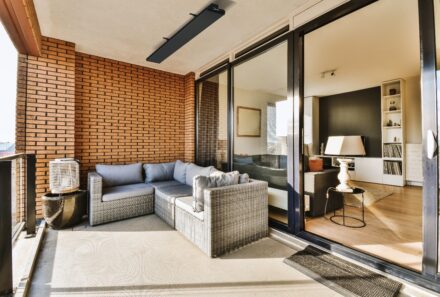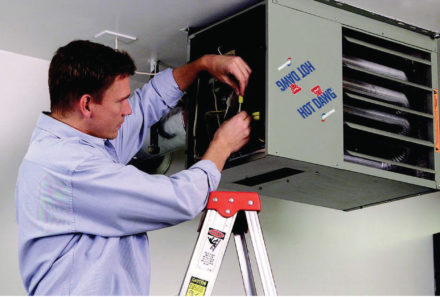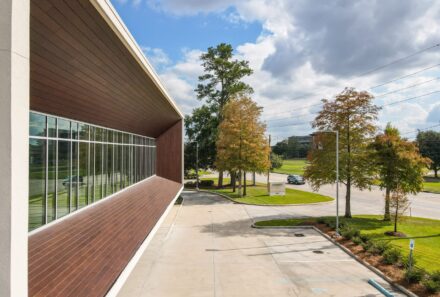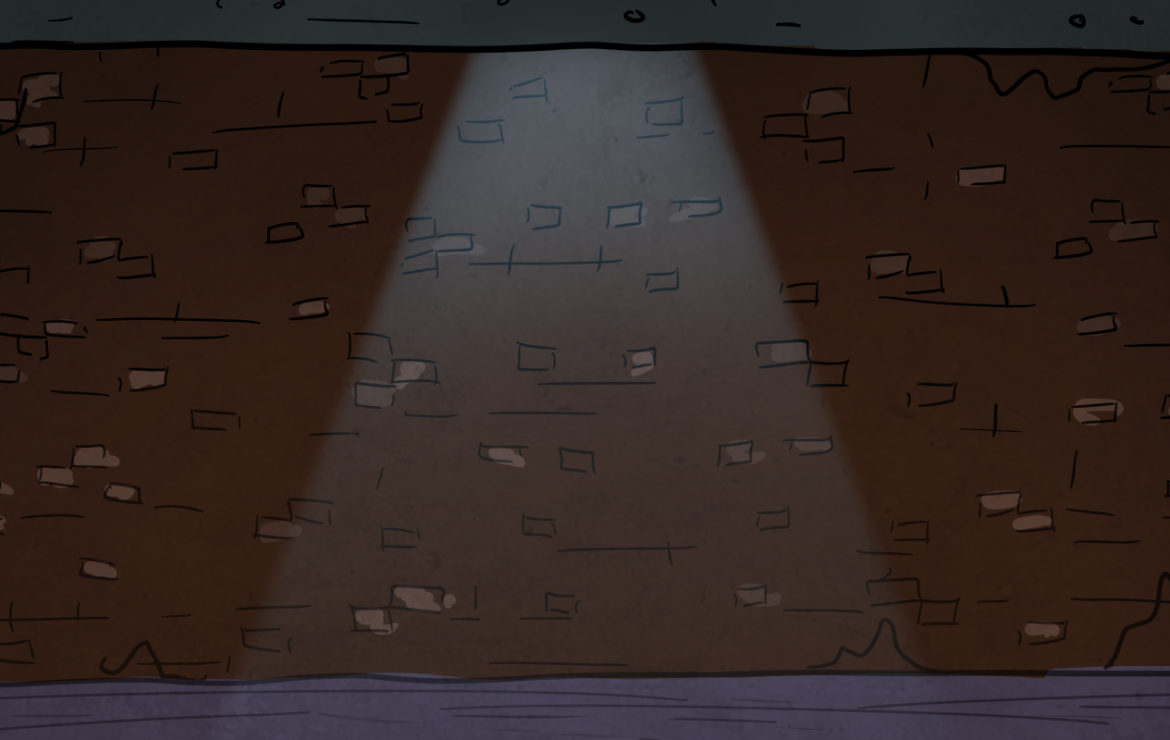
What the HVAC-owabunga?!
HVAC-owabunga!
Continuing our series of heating and cooling fictional locations (check out how Bruce Wayne maintains the air temp of the Batcave HERE), we head below the streets of New York City to the base of everyone’s favorite 6-foot-tall anthropomorphic amphibious teenage weapon-wielding crime fighters.
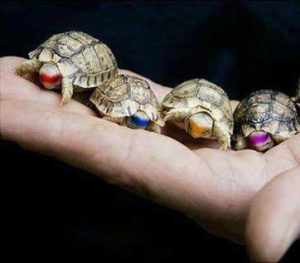
To put it in terms that Donatello would enjoy: HVAC, or heating, ventilation, and air conditioning, is the technology of indoor and vehicular environmental comfort. Its goal is to provide thermal comfort and acceptable indoor air quality. HVAC system design is a subdiscipline of mechanical engineering, based on the principles of thermodynamics, fluid mechanics, heat transfer, and often includes refrigeration. To put that in terms Michelangelo can understand: it’s heating and cooling a space. Homes and cars have central heat for the cold months and A/C for the hot ones. We all have an idea how those things work. When you’re cold, you contemplate grabbing a sweater or a blanket but inevitably boost up the thermostat. And when the summer months unleash an assault of heat and humidity, you crank the A/C to relieve yourself from what can often feel like an attack by interdimensional humidity creatures bent on world domination.
But technical jargon aside, how does one maintain the air temp of a more unique location, such as the TEENAGE MUTANT NINJA TURTLES’ SEWER BASE? We sat down with a number of Modine’s engineers to figure out just that. We asked them what it would take to heat/cool the tunnels and chambers that make up the Turtles’ base, specifically the sewer base seen in the newest incarnation of the superheroes, 2016’s Teenage Mutant Ninja Turtles: Out of the Shadows. The films, tv series, both animated and live action, have offered a variety of layouts, but focusing on this version allows us to make assumptions on temperature and moisture common with NYC sewers.
The base is found below the streets of Manhattan in what is one of the most complex and oldest sewer systems in America. The base (estimated at 12,420 square feet) is certainly some prime real estate, albeit subterranean. No neighbors, plenty of storage space, free parking, running water, and right in the heart of Manhattan? One can only assume what rent would be on such a place, but I’m sure Master Splinter would know that wise men say: Forgiveness is divine, but never pay the full asking price for sewer real estate.
The base is accessible courtesy of the drainage and subway tunnels. It was not originally designed for habitation, but the boys and their rat master have managed to utilize the space they have, as well as repurpose existing chambers, to create multiple rooms and common areas.
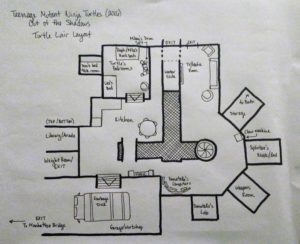
NYU grad students at $3000 a month per student.
Unlike the vast majority of the state, New York City features a humid subtropical climate. New York City is an urban heat island, with temperatures 5–7 degrees Fahrenheit warmer overnight than surrounding areas. Humidity is on average between 70 and 80%, which is just perfect for our amphibious friends, who are Red Eared Sliders and can survive in a vast range of humidity levels; making humidity a minor concern for the space. As far as an ideal internal temperature is concerned, turtles need to regulate their body temperature by changing their environment, so the lair would need to have several independently controllable spaces:
Relaxation Chambers (or a Basking Area) for Turtles should be approximately 80° to 85°F. With average size turtles, this can be achieved with the use of overhead basking lamps with heat bulbs. For our man-sized heat-needing heroes, we will call on the high intensity ceramic infrared heaters that have no need to vent the actual unit and therefore run nearly silently. Side safety note: the space does need to be vented to ensure the safety of all living beings in the space.
Training Chambers (taken from ideal water temperatures for semi aquatic turtles) should be 78 degrees F. Temperature regulation is a central feature of HVAC systems. This is achieved by the use of sensors in the respective room in use. The reading from the sensor is compared against the set temperature and heating and/or cooling power is increased or decreased accordingly. By setting the training chamber to 78 degrees and closing it off from the rest of the sewer base, there will be no trouble maintaining that ideal temperature.
Another major concern is going to be ventilation. Living in the sewers, there is likely highly toxic fumes coming from the sewage. Ventilation is essential. Because of the confined space which houses a gas furnace and possibly other gas appliances, the enclosure must be properly ventilated per gas code requirements. Even if the boys and their rat sensei are living in this subterranean, rent free domicile, we still want to meet HVAC codes. The amount of cubic feet needed to properly vent your furnace and air unit will depend on the BTU output of the appliances, as defined in the National Fuel Gas Code.
Local building codes may also dictate our furnace and other heating and air conditioning system components be accessible for future inspection, repair, or replacement. Not only is this a possible requirement, it’s an all-around good idea. We want to protect our radical superheroes in the event of future problems. While the HVAC Code and Permit Considerations vary, the codes which apply to finishing underground locations, such as your basement, as a living area likely have some heating and cooling considerations, especially when gas furnaces are involved, as mentioned above. We do not have windows available, and the few sewer grates leading to the surface are not going to be adequate for providing the required amount of natural ventilation. This may mean we are required to install a mechanical ventilation system for the health and safety of occupants. The best solution would be to run ventilation ducts from the base, along the ceiling of the connective sewer system, and ending at grates leading to the streets.
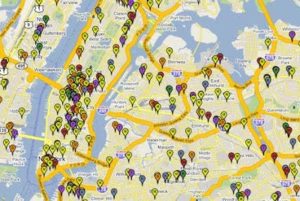
And only three public restrooms
An advantage of the noise levels of the subway system and general sewage noise is that the HVAC system noise levels will not be a huge concern. One of the key aspects of being a ninja is being a silent warrior.
Taking the location, the weather conditions, and the discretion the heroes require all into account, our Modine experts would suggest a Hydronic heating unit for the training chambers with explosion proof motors because of all the methane gas in the sewer. This install would be a lot like the installation process in wastewater treatment plants.
The HVAC systems would be safe from weather conditions, such as rain and the heavy amounts of snow New York sees in the winter. Fin-tube radiation heaters from Modine are designed with a variety of enclosure styles to meet most any application or architectural style. Heating elements of Modine’s Fin-Tube Radiation are copper tubes with aluminum fins. The aluminum fins are mechanically bonded to the copper tube to provide maximum heat transfer. They use lots of steam–water is easier to boil in high pressure environments– but they have no moving parts and could be installed in the rooms and Donatello’s lab. Modine could easily tap into the steam lines that are underground in NYC. Master Splinter may not want it as hot in his room, or if he wants it really hot for meditation, an easily adjustable fin-tube can be installed. They run quite quietly.
There are many advantages in using the HVAC system in this location, all of which meet the requirements of the anthropomorphic turtles. Ultimately, getting the equipment through the limited access points above ground–manhole covers or the waterfront drainage tunnels, through the weaving labyrinth of concrete tubes, and into the base would be the most difficult part of the installation, and that’s not a deal breaker by any means.
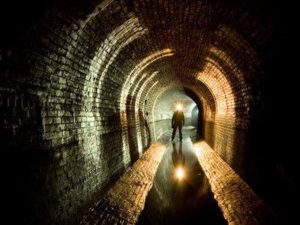
Indiana Jones searching for the Holy Grail.
Just like the rest of New York City, the 112-year-old tunnel system consists of many layers, each of which provide a glimpse into the city’s history. The tunnels connect from subway to water systems to drainage. Many of the tunnels are large enough to drive trucks through, while others can be the size of a coffin. Knowing that the Turtles are able to drive their van in and out of their base, we can assume they are connected to the larger tunnels used for the river overflow and abandoned subways, in reality, the larger abandoned spaces such as this don’t stay neglected for long. While some of NYC’s old tunnels and stations seem to have been neglected for good, many are reused—like the abandoned tunnel below Central Park that has been integrated back into the Second Avenue Subway—and repurposed, as graffiti canvases, art galleries, party spaces, or even a VIP entrance to one of New York’s most luxurious hotels. Moving the required equipment from the surface to the TMNT base will be a simple matter of mapping the route and avoiding the detection of ravers, City Workers, and mole people.

In the end, Modine would gladly help the crime fighting quartet. Heating and cooling the TMNT base has proven to be a task the engineers at Modine would be able to tackle with ease by determining the parameters of the space and the environmental conditions. The last obstacle of the whole ordeal would be deciding what would go on everyone’s pizza.
NEXT TIME: HVAC in the Wizarding World

